#Irish Law
Text
Ancient Irish Law
‘Irish law is the oldest, most original, and most extensive of mediaeval European legal systems. It is a unique legal inheritance, an independent indigenous system of advanced jurisprudence that was fully evolved by the eighth century. It is also far less well-known than it deserves.’
‘Early medieval Ireland evolved a system of law (often called ’Brehon’ law, from the Old Irish word brithemain…

View On WordPress
#Ancient Irish Law#Annals of Connacht#Brehon Law#CELT#Corpus of Electronic Texts#D.A. Binchy#Dublin#Former Director#Galway#Irish Law#Maeve Binchy#National University of Ireland#Professor Donnchadh Ó Corráin#RIIP#Royal Irish Academy#Trinity College
11 notes
·
View notes
Text

But with your help,
#we can recreate 1792 belfast we just need to start another violent revolution somewhere in europe and re pass the penal laws but ONLY#the bits applying to protesta-- *GUNSHOTS#/joke#french revolution#irish history#reading#jory.txt
17 notes
·
View notes
Text
No thoughts just Trafalgar D. Water Law subbed voice with an Irish accent
#trafalgardwaterlaw#law one piece#trafalgar law#trafalgar one piece#one piece law#omfg#i’m gonna die#law with an Irish accent#uh yeah#yes please
6 notes
·
View notes
Text
Our next dog (in like several years) is likely to be another English Cocker. But I cannot deny the draw of an English Setter.
It would match Arthur so well. Big and little! Can you not imagine them romping around together?


I would def want a blue belton & tan and would name him Galahad.
#I do really want a Setter eventually#I've fallen in love with them at dog shows. They're so goofy#Haven't decided if I want an Irish or English or Gordon ...#Probably Irish because I do love the idea of a solid red dog#My mother-in-law said she wanted a Setter when she was younger until she found out how stupid they are. So she got a Cocker#She doesn't get why I want a Setter but no the stupidness is part of it! Love a stupid dog#I mean I am glad she got a Cocker back then because that has directly led to us all getting Cockers now lol
13 notes
·
View notes
Text
84% on my essay 😎 fucking BALLER. Also 80% on my author contract review 😎 and 82% on my previous essay and assignment 😎 and I KNOW my just handed in stuff is golden.
Sometimes working hard on stuff. Makes them good.
#if anyone wants to know about a) easy read fiction publishing b) one particular REALLY COOL irish indie publishing house#c) how the Obscenity Act and current Obscenity Laws have been used for censorship#hit me up and I can send you an essay lol#and if you d) want me to write a letter suggesting baseline edits to a piece of text. pay me as a freelancer.#i am proud!!! of myself!!!!#80% and above is a distinction. jsyk. ;)
7 notes
·
View notes
Text
Wilde is not a Social Class
part 1: What "Civil" and "Wilde" really meant
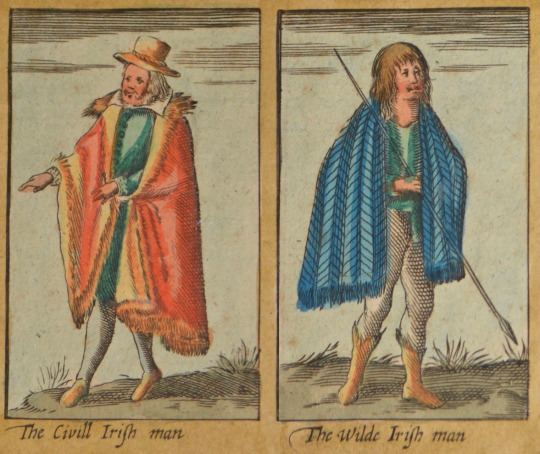
The "Civill" Irish man and the "Wilde" Irish man from a 1676 colorization of John Speed's 1611 map of Ireland
“the wilde men in Ireland, properly called Woodkarne . . .”
-John Derrick “The Image of Irelande” 1581
The labels ‘civil’ and ‘wilde’ show up in several 16th and 17th century depictions of Irish people. These include an illustration by Lucas De Heere, John Speed's map of Ireland, and John Derrick's The Image of Irelande, which are all frequently used as sources in Irish dress history. Many modern viewers have misinterpreted these terms as indicators of socioeconomic status or social class with 'civil' interpreted as meaning middle class and 'wilde' interpreted as poor. (Dunlevy also specifies that 'civill Irish' means the '(non-military) middle class'. The word civilian did not acquire the meaning 'not part of the military' until the 19th century, so it is not applicable to 16th and 17th c. usage.) This misconception about the historical meaning of these terms distorts our understanding of how the Irish dressed during the 16th and 17th centuries. In order to accurately interpret these images, we first need to understand how the terms 'wilde' and 'civil' were actually used during this period.
In this post, I will discuss what these terms meant historically, how they were used in 16th and 17th c descriptions of the Irish, and what they are actually telling us about the Irish people in Speed's illustrations.
The terms 'wilde' and 'civil' were used not by the Irish themselves but instead by the British and continental Europeans to describe the Irish (Dunlevy 1989). John Speed and John Derrick were English; Lucas De Heere was a Flemish artist who never went to Ireland and was given information about the Irish by the English (McClintock 1943).
Randle Cotgrave's A Dictionarie of the French and English Tongues, published in 1611, gives us a period definition of civil. It defines Civil as: "civill, courteous, gentle, mannerlie, well-behaved; also, temperate, mild, quiet; also, towne-bred, or burguerlike; also, politicke, lay, secular, civill." There is nothing about wealth or social class in this definition. Civil instead means civilized; it refers to a person's behavior or urban residence.
The concept of the wild man as the antithesis of urban-dwelling, civilized man is as old as civilization itself, with the oldest recorded example being the ancient Sumerian figure of Enkidu from the stories of Gilgamesh. It shows up in ancient Greek and Roman texts as monstrous wild men being said to live in foreign places like Libya and Ethiopia. In Christian Medieval Europe, wild men became a hairy subhuman race separate from, yet living near, civilization (Husband 1980).
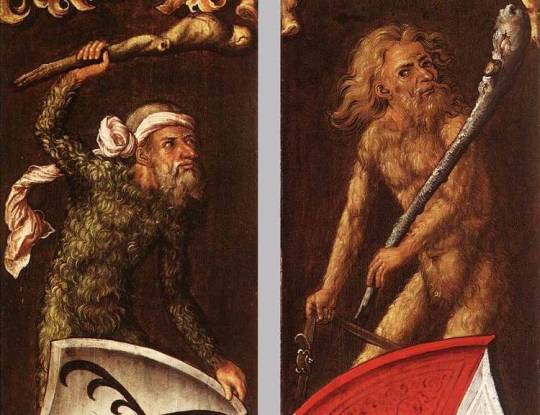
2 Wild Men by Albrecht Dürer, 1499
Medieval wild men and women had long, unkempt hair, wore little to no clothing, and fed on wild plants and raw meat rather than farming. They were characterized as violent, brutish and irrational. Because of their proximity to nature, they were sometimes portrayed as having an unusually close relationship with animals, able to ride horses without a saddle or bridle (Husband 1980).

Wild man riding with no bridle and sticks for a saddle c1480 by Ludwig Schongauer
Although the hairy wild man of the late Middle Ages was a mythical being, this barbaric, uncivilized archetype clearly influenced 16th and 17th c portrayals of the Irish.
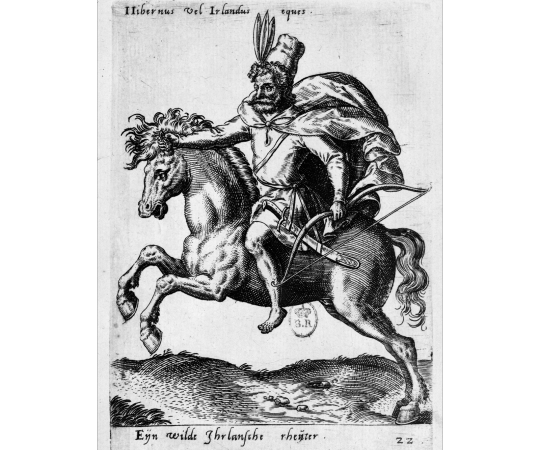
Abraham De Bruyn's c1578 "wild" Irish rider rides bareback and bridleless, in spite of the fact that the 16th c. Irish used saddles and bridles. John Speed writing in 1611 implies the complete Irish diet was watercress, roots, mushrooms, shamrocks, butter with oatmeal, milk, whey, raw meat, and congealed blood with butter. This list fits nicely with a wild man's no-farming lifestyle and conveniently omits the bread, roast mutton, meat pie, and alcohol mentioned in other period accounts of Ireland (ex Gernon 1620, Vital 1518).
These conceptions of 'wild' and 'civil' played an influential part in British colonialist policies in Scotland and Ireland. The 16th c English and King James the VI and I considered the Gaelic Irish and Highland Scots to be barbaric and the English and Lowland Scots to be civil. The plantations of Ulster and the Isle of Lewis were created as part of a series of attempts by the British crown to 'civilize' these areas (i.e. eradicate Gaelic culture). In a 1607 letter about the plantation of Lewis, King James I called the settlers "civile gentlemen" and the native Scots "wilde weedes" (Brochard 2019).
Earlier attempts by the British to "civilize" Ireland involved banning Irish culture. A 1537 statue of Parliament stated that people in Ireland were savage and wild, because of . . . cultural diversity. Yes, really.
"There is [. . .] nothing which doth more conteyne and keep many of [the King's] subjects of this his said land, in a certaine savage and wilde kind and maner of living, then the diversitie that is betwixt them in tongue, language, order, and habite, which by the eye deceiveth the multitude, and perswadeth unto them, that they should be as it were of sundry sorts, or rather of sundry countries, where indeed they be wholly together one bodie . . ."
-An Act for the English Order, Habite, and Language, Rolls of Parliament cap. 26, 28th year of Henry VIII (1537). (cited in Butler 1786). (emphasis added)
King Henry VIII was apparently afraid that the "savage" manner of living practiced by the Irish (i.e. speaking Irish, following Brehon law, and wearing Irish clothing, instead of using English language, customs, and clothing) would persuade the rest of Europe that the British Isles were not, in fact, one happily united kingdom. Of course, instead of just letting England and Ireland to be sundry countries, his solution was to ban Irish language and clothing. This policy was continued by later 16th c. British colonial administrators in Ireland.
"The inhabitants of the cities and corporate towns shall wear no mantles, shorts [sic] Irish coats, or great shirts, nor “suffer their hair to grow glebb, but to wear clerks’ gowns, jackets, jerkins, and some civil garments;” and no maid or single woman shall “wear or put on any great roll or kercher of linen cloth upon their heads, neither any great smock with great sleeves, but to put on hats, caps, French hoods, tippets, or some other civil attire upon their heads;”
-1571 Laws and ordinances proclaimed at Limerick by Sir John Perrot, Lord President of Munster [. . .] to be observed throughout that province (cited in Carew 1867). (emphasis added)
The permitted "civil" garments: gowns, jackets, jerkins, hats, caps, French hoods, and tippets were items worn in England during the 16th c. (Mikhaila & Malcolm-Davies 2006) while the banned garments: bratanna, ionair, léinte, linen rolls, and kerchiefs, and the hairstyle, glibs, are Irish fashions (Dunlevy 1989, McClintock 1943).
These examples make it clear that to 16th and 17th c artists like John Speed 'civil' meant English and 'wilde' meant Gaelic Irish. The "Civill Irish man" was anglicized. He spoke English, wore English clothing styles, and followed British laws. The "Wilde Irish man" remained culturally Gaelic. He spoke Irish, wore Irish clothing, and followed Brehon law. 'Civil' and 'wilde' did not indicate level of wealth; they indicated level of acculturation.
In part 2 of this post, I will discuss how well the interpretation that the 'wilde' Irish were poor and the 'civil' Irish were middle class matches what we actually know about dress in 17th c Ireland. Was acculturation level actually correlated with wealth?
Acknowledgement: I would like to thank the members of the reenactment group Wilde Irish for making me aware of this subject.
Bibliography:
Brochard, Thomas (2019). Plantation: Its Process in Relation to Scotland’s Atlantic Communities, 1590s–1630s. Journal of the North Atlantic, Special Volume 12, 73-94. https://www.jstor.org/stable/27133161
Butler, James G. (Ed.) (1786). The Statutes at Large, Passed in the Parliaments held in Ireland (Vol. 1). George Grierson, London.
Carew, George (1867). Calendar of the Carew Manuscripts, 1515-1574 Preserved in the Archiepiscopal Library at Lambeth. (J.S. Brewer, & W. Bullen, Eds.). Longsman, Green, Reader, & Dyer, London.
Cotgrave, Randle (1611). A Dictionarie of the French and English Tongues. Adam Islip, London.
Dunlevy, Mairead (1989). Dress in Ireland. B. T. Batsford LTD, London.
Gernon, Luke (1620). A Discourse of Ireland.
Husband, Timothy, & Gilmore-House, Gloria (1980). The Wild Man: Medieval Myth and Symbolism. The Metropolitan Museum of Art, New York.
McClintock, H. F. (1943). Old Irish and Highland Dress. Dundalgan Press, Dundalk.
Mikhaila, Ninya, & Malcolm-Davies, Jane (2006). The Tudor Tailor. Quite Specific Media Group, Ltd, London.
Speed, John (1611). The Theatre of the Empire of Great Britaine: presenting an exact geography of the kingdomes of England, Scotland, Ireland, and the iles adioyning. William Hall, London.
Vital, Laurent (1518). Archduke Ferdinand's visit to Kinsale in Ireland, an extract from Le Premier Voyage de Charles-Quint en Espagne, de 1517 à 1518. translated by Dorothy Convery.
#decolonizing history#irish history#irish dress#gaelic ireland#stair na héireann#16th century#17th century#art#british colonialism#dress history#historical dress#statutes and laws
13 notes
·
View notes
Text

“De réir gach dlí eitlíochta atá ar eolas, níor cheart go mbeadh beach in ann eitilt. Tá a sciatháin róbheag chun a chorp beag ramhar a iompar ón talamh. Ar ndóigh, eitlíonn an bheach ar aon nós. Mar is cuma le beacha cad a cheapann daoine atá dodhéanta.”
#bee movie#the bee movie#according to all known laws of aviation#gaeilge#gaeilgeblr#blocblr#irish#irishblr#irish langblr#ireland
45 notes
·
View notes
Text

International Law regarding the bombing of Al-Ahli Arab Hospital in Gaza City
Full article here:
#free gaza#gaza strip#irish solidarity with palestine#free palestine#palestine#gaza#news on gaza#al jazeera#boycott israel#israel#Al-Ahli Arab Hospital#International Law#War crimes
9 notes
·
View notes
Text
ONE MORE THING regarding late 19th Century Anglo-German relations... Okay. It's a little paternalistic but I imagine each European nation gets a bit touchy when it comes to these poor girls being plopped in a place they aren't prepared well enough for being asked to carry out diplomacy at a time when personal politics don't matter as much anymore. And I think Victoria's eldest daughter Vicky, the mother of Kaiser Wilhelm II, kind of shows this phenomena in a nutshell.
Also I do imagine that Arthur would be incredibly uncomfortable with how Princess Vicky was treated by the Prussians (then Germans) which would really colour his interactions with Gilbert and Ludwig in the second half of the 19th Century. It's a narrow scope example of why relations between the two just crumble so badly by the 1880s on.
Bear with me. I have a point.
Okay so, Queen Victoria's girls were very much trained for politics. Prince Albert was like here have all the philosophy and theory you could ever need. So Vicky, Alice, Louise, Helena and Beatrice all would be ready to be good Queens. Or, at least, trained to be good British Queens, which doesn't really fly in the German states. Especially for eldest daughter Vicky.
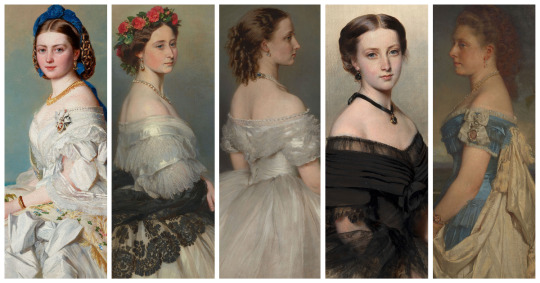
Sidenote: They all have chubby cheeks and I want to squeeze them.
So you have a Princess who yes has a nice like-minded husband, but her in-laws dislike her, and her eldest son rebels against his liberal mum by going full on authoritarian and creates a rival court so extensive that by the time she becomes German Empress this other faction frequently raids her home for anything that would excuse her exile or worse... you know. Typical royal family stuff.
But she is also a woman who reads and supports Karl Marx (what the...) and Charles Darwin, builds hospitals during the Franco-Prussian war, founds girls schools and nursing colleges, visits Synagogues, openly calls antisemites lunatics, encourages a free press... and the German court hate her for it. Largely because she refuses to be quiet.

So it's not just a case of 'the mean Germans think my perfect Princess is annoying' for Arthur; it's that conflict between Liberalism and Conservatism which is the very crux of why Germany and England are incapable of having friendly relations. Arthur watches the soft power and these (somewhat bullshit/hypocritical) liberal ideas and principles he has set himself up as representing on the international stage get completely and utterly rejected by another nation. One that he cannot exert control over. And I bet that infuriated him. His way absolutely is the right way what is Ludwig's damage you know? And I guess after WWI he feels mighty vindicated but until then... what a frustration.
Arthur and Ludwig (or Gilbert, depending on how you interpret who's actually in charge at this time) have such very different ideas on power and ruling and what a monarch is even there to do. It's just a very personalised example of why Arthur cannot get along with Ludwig. A British Princess (friendship) was a very precious thing to have, and the Germans squandered her (it). At least in Arthur's eyes.
#no-one cares but my fave princess was Louise#her life is like:#excel at carpentry & sculpture do a mean sword dance marry a maybe gay Scot & not a prince go to Canada host a party in Ottawa#start a fire at the party make rich people uncomfortable in Ottawa by making them talk to grocers catch a 13kg fish in front of dad-in-law#get a concussion from a sleigh accident have Alberta named after you support Irish Home Rule support suffragists#offer to do a Bermudian lady's ironing for her whilst she gets you water because you decided to walk to a party instead of drive die at 91#what a gal#...anyway#hetalia#headcanon#hws england#hws germany#hws prussia#historical hetalia#op
28 notes
·
View notes
Text
already seen someone call graham norton british and honey, you just stepped on a goddamn landmine
#esc#esc 2023#eurovision#eurovision 2023#kai liveblogs#graham norton#maybe just check where theyre all from before you claim an irish man is british#hes not even northern irish#which by law technically would technically make him british but also thats a whole other can of worms
15 notes
·
View notes
Text
"Like many people who go through surrogacy, Cathy said it was not a choice; it was their only option." While I feel bad for what Cathy went through surrogacy was NOT her only option. Adoption is also possible.
By Kate McDonald
As a bill that seeks to regulate aspects of surrogacy goes before cabinet, Prime Time spoke to families who have used international surrogates.
"My house was silent. When you have a stillborn baby, your house is silent." Cathy Wheatley was seven months pregnant when she had a spontaneous uterine rupture. Her daughter, who she named Helen, died at birth and Cathy found out she could not carry any more pregnancies. "I lost my little girl," Cathy said. Despite their devastating loss, Cathy and her husband Keith Wheatley, from Co Wicklow, were determined to have their family.
Like many people who go through surrogacy, Cathy said it was not a choice; it was their only option."When a doctor mentions surrogacy, your first reaction is, people like me don't do that. You know what I mean? Like, we're just ordinary, everyday people on a farm in Wicklow. "But when they looked into it, they found that there were Irish couples doing it.
"You have to be very careful to make sure that you do all your research so that you know that you're doing the best that you possibly can for your babies, but also for your surrogate, because without your surrogate, you wouldn't have your babies," Cathy said.
The Wheatleys decided to go to a clinic in Ukraine, where they met Ivanna, who would eventually carry and give birth to their twins Ted and Elsie.
"It's the biggest thing in the world to give your babies to somebody to carry and to mind until they can give them back to you," Cathy said.
"I love those kids but I don't love them as my own; those are different feelings. Like it’s my nephew or cousins, not like my son or my daughter," Ivanna said.
Ivanna told Prime Time she became a surrogate mother after the birth of her second son.
"That is something I wanted to do because I love helping people, I love the feeling of being pregnant and I thought why, why don’t I help?" Ivanna said.
Cathy and Keith Wheatley remortgaged their house to front the cost. They paid just under €40,000 to their clinic in Ukraine, of which €14,000 was compensation for their surrogate Ivanna.
"I’m pregnant for nine months. I don’t work. But I have two kids. And my kids have basic needs" Ivanna said.
"They needed food, they needed education, they need dresses – everything that a normal kid needs. If I am surrogate, I am pregnant, I can’t work. It’s not like you are getting a lot of money with that - not like you decide 'I need money’ so I’ll go and get a baby for somebody. [It’s] not like many people think it is."
With legal fees, flights and accommodation, their total spend was €70,000.
"They don’t pay you for being pregnant in Ukraine, they compensate for your time," Ivanna said.
The Wheatleys and Ivanna developed a deep relationship and kept in touch after the twins’ birth.
When Russia invaded Ukraine two years ago, the Wheatleys brought Ivanna and her children to live with them in Ireland.
"If we talk about what happened in my country now, they came and they saved my life and they saved the life of my kids because four years ago I gave life to their kids," Ivanna said.

Brian and Kathy Egan had always planned to have four children. But after having her first son, Harry, Kathy had six miscarriages and she said she knew a larger family wasn't to be.
"It obviously gets harder every time to pick yourself up after it and try again. But we still felt very strongly that we'd be able to do this."
Kathy had no issue getting pregnant but couldn’t sustain the pregnancies. After another two miscarriages, the Egans began to consider surrogacy.
"Because it's new to you, you're second-guessing everything, you really want to make sure you have the right information. It's going to be the right clinic, the right surrogate, and everything is right in every way," Brian said.

Kathy and Brian Egan
The cost of surrogacy in the US and Canada ruled that region out for them, so they began looking elsewhere. They decided to go with a clinic in Lviv, Ukraine.
"Within a month, we were matched with a surrogate who matched my blood type, and we went ahead. But unfortunately, at the 20-week scan, we discovered there was a fatal fetal abnormality within the heart."
That first surrogate pregnancy ended in miscarriage, but the Egans then found a second surrogate.
"We did Zoom or Skype calls with Mariana, our surrogate. Her first response after every checkup was, 'now, can we tell Kathy & Brian?'"
"She's a very strong lady and quite business-like too. She was in no doubt that this was helping us both," Brian said.
Baby Luke arrived in May 2019 while Brian, Kathy and big brother Harry were at home in Kilkenny. They travelled through the night to get to Lviv.
"You cannot get there quick enough. You'd swim there," Kathy said.
"He was tiny. He was four weeks early, but he looked like Harry looked when he was born. So, I knew straight away which one to walk over to."
"You feel like, you know, you've been talking to him for months and praying and hoping to meet him, but it's like no other feeling," Kathy said.
The entire process cost the Egans about €100,000, they said.
Two years later, in June 2021, the family were stunned when Brian was diagnosed with an aggressive form of prostate cancer.
"I didn't know what to say, really. That ‘cancer’ word anyway, you're all over the place," Brian said.
Eleven days after he was diagnosed, Brian’s prostate was removed. The surgery was a success, but his next blood test indicated the cancer had spread.
"At that stage I genuinely felt I didn't have long left. I was looking at Luke, he was two, didn't know if he was going, I was going to see him being three."
Brian received radiotherapy treatment and is still getting hormone treatment, which he says is going well.
However, due to the lack of regulation around the legal status for parents of children born through surrogacy, the Egans were left in a precarious situation.
Current Irish legislation does not cover legal issues that arise in surrogacy. The legal status and rights of all people involved are covered by the laws dealing with non-surrogate births.
This means the surrogate mother, who gives birth to the child, is the child's legal mother under Irish law. In the Egan’s case, Kathy is not Luke’s legal parent, although genetically he is her son as he was born using Kathy’s egg and Brian’s sperm.
"We just realised, if I pass away prematurely, Luke is effectively an orphan of the state." said Brian. "Kathy is just his legal guardian. He would not have a parent, he has different rights to Harry."
Brian and Kathy decided to take a case to the High Court, saying the State had failed to recognise Kathy as Luke’s mother.
The Egans were in court in April but have recently paused their action after hearing assurances that long-promised surrogacy legislation will be brought before the Oireachtas soon.
Under proposed terms of the Health (Assisted Human Reproduction) Bill 2022, parents of children born through surrogacy will be recognised as legal parents, if they meet certain criteria in the jurisdiction in which the surrogacy is intended to take place, and also the criteria to be specified in the Irish legislation.
Senator Mary Seery Kearney and her husband Dave tried to have a baby via IVF.
"We did 13 rounds.... I was pregnant on five occasions...unfortunately, they all resulted in a miscarriage," she said.
"We're a very close couple, but it's a very, very stressful experience. All my life... I wanted to be a mother. I wanted my own child," she said.
Mary initially thought that surrogacy was for well-off people: "My view was Elton John did surrogacy, really rich people did surrogacy. We were ordinary people, already indebted from all of the IVFs we had done."
When she began researching, she initially relied on Google. She said the most impressive website she found was for a clinic in Kyiv.
"We flew over, we gave them €12,000 upfront, and nothing came of that," she said.
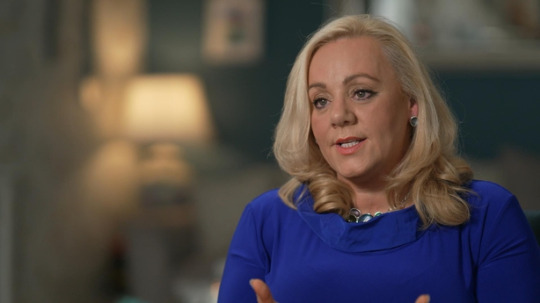
Senator Mary Seery Kearney
After that experience in Ukraine, Senator Seery Kearney and her husband found a clinic in India and a surrogate who would carry their child.
"We were so grateful to this woman, and I also felt a huge responsibility for her," Mary said.
They said they sent gifts every couple of weeks and engaged with the surrogate mother all the way through. When the pregnancy reached the 20-week mark, they allowed themselves to hope it would be a success.
"I have to say, right up until the moment we stood outside the theatre, I didn't really believe. I believed that something was going to go wrong. Because you, you carry that trauma into the experience," she said.
But when they were called inside they knew it was real.
"I literally ran, I screamed and ran, 'this is my little girl,' handed into my arms," she said.
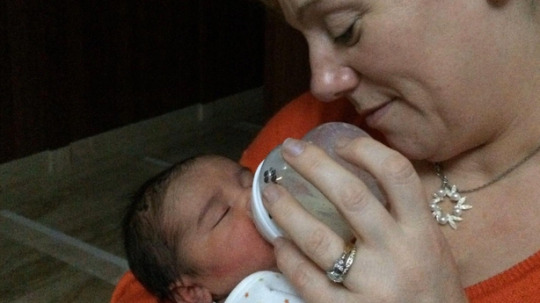
Now advocating in the Oireachtas for changes to made to Irish surrogacy legislation, Mary thinks 'goodwill' payments should be made to the surrogate to cover their costs during the pregnancy, but does not agree with commercial surrogacy: in which an agency takes a fee and passes on a portion of it to the surrogate.
"Throughout the process you have doctors paid, clinicians paid, you have the travel agent's paid, you have the lawyers paid.
"The only person that isn't entitled to any goodwill gesture at all is the person who's giving birth, who's carrying the pregnancy and giving birth. And that there is no reason why a goodwill payment could not be made to that surrogate," she says.
#Ireland#Surrogacy is not an only option#Adopt#Don't rent out a women and buy a kid#Irish couples had no trouble finding kids to adopt when the government and catholic church ran the Magdalen laundries#Irish couples exploiting Ukrainian women#At least the Wheatleys looked after the surrogate mother and her kids after the war broke out#Many other purchasing parents just grad the kid and don't look back at the woman#And how she's recovering from pregnancy and childbirth in a warzone#Health (Assisted Human Reproduction) Bill 2022#Why are Irish parents using surrogates if the laws don't recognize both parents?#Don't they stop and think about what will happen to the kid in the event if a tragedy?#13 rounds of IVF? When there are so many kids to adopt?
6 notes
·
View notes
Text
Brehon Law | Clans and Social Classes
Irish society, up through the Iron Age, was based on the family unit. The family traditionally consisted of living parents and their children. The next larger unit came to be known as the Sept, which consisted of a closely related group of families such as the families of children of one set of parents and normally bore the same surname. The Clan (from clann meaning children) was the next larger…
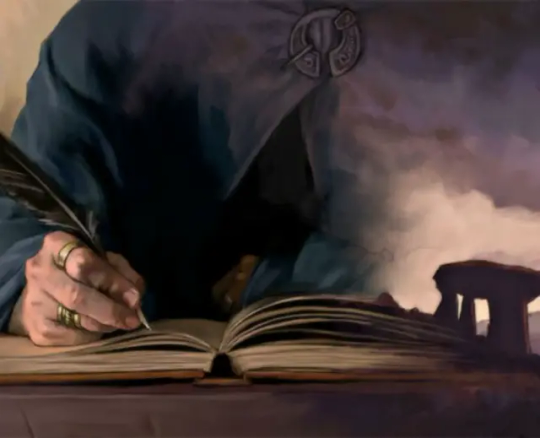
View On WordPress
#Ancient Laws of Ireland: Uraicect Becc and Certain Other Selected Brehon Law Tracts#Clans and Social Classes#Family unit#History#History of Ireland#Ireland#Irish Brehon Law#Irish Law#Iron Age#William Maunsell Hennessy
10 notes
·
View notes
Text
ive said multiple times that i hate it when people say youtubers/streamers/whatever should voice sonic characters (and yes this includes the ones you the reader like. zero exceptions) but im actually not super mad about jacksepticeye in sonic prime im more confused than anything. like how come you wouldnt get anybody from the games but you let him in. also why him specifically
#well it probably only doesnt make me mad because i know nothing about him and he was just a background character#and the reason i hate it when people say youtubers should voice sonic characters is because#its always a suggestion for already established characters like sonic or shadow or eggman or silver or big or whatever#and the person in question is either only associated with sonic because of sonic related content they made that while popular#has Also done irreparable damage to sonics reputation and the way people think about certain games and characters#and people say they deserve the role or that theyve earned it or whatever like. No?? why should sega reward them for that shit#or they just sound nothing like the character people want them to voice. or both#and again i do not know anything about jacksepticeye and he was only a background character i didnt even notice he was there#until i saw people pointing it out#and its kinda weird that hes there like. why him of all people.#but whatever. could have been much worse#sonic prime spoilers#sonic prime#tagging spoilers just in case idk#also ik everyone got recast with canadian voice actors because of canadian voice acting laws#but isnt jse Not Canadian???#edit Yes i know about irish the hedgehog but that still doesnt explain it
36 notes
·
View notes
Note
in my defense, i was like 90% sure u already knew what banana fish was and i thought u would call me out on my bs right away. i did have a moment of panic when it turned out that u didn’t so 🥺
Hahaha it’s totally fine. I’ve actually never heard of it before today but I did start watching it because of this because I was curious. I like it so far
#I don’t personally mind dark or serious content matter#it’s never really affected me. I dunno why. i refuse to fuck with the supernatural because Irish but anything real world doesn’t really#bother me all that much. I don’t have many triggers#granted I work in criminal law and my day to day involves a lot of like. face stabbings.#banana fish isn’t triggering for me#but yeah I’d never actually heard of it before today#it’s definitely interesting and I like it so far so solid rec#but it is so not slice of life comfy anime lol#but it deals in a lot of serious subject matter so people who will be triggered by it should definitely not try it it will not be comfy#no harm no foul with me I just want to make sure no one following me takes the rec and gets accidentally triggered#not gonna lie my friend has been telling me to watch an anime for ages that’s called ‘something something -fish’ that I know for a fact is#slice of life anime about an awkward girl who likes jellyfish and a boy son of a politician who crossdresses and I thought it was that#i googled that is princess jellyfish it is very much not banana fish#it’s supposedly very cute and comforting I’ve been meaning to watch it forever#I knew there was a fish somewhere in the title I knew that much
4 notes
·
View notes
Text
i am now thinking about the dublin murder book series (one of the best ever written) in relation to svu and i just remembered this quote exists:
“The girls I dream of are the gentle ones, wistful by high windows or singing sweet old songs at a piano, long hair drifting, tender as apple blossom. But a girl who goes into battle beside you and keeps your back is a different thing, a thing to make you shiver. Think of the first time you slept with someone, or the first time you fell in love: that blinding explosion that left you cracking to the fingertips with electricity, initiated and transformed. I tell you that was nothing, nothing at all, beside the power of putting your lives, simply and daily, into each other's hands.”
#IS THIS NOT ELLIOT X OLIVIA#pls read this series if you like the most messed up irish detectives you've ever read in your life#elliot x olivia#eo#law and order svu
3 notes
·
View notes
Text
@beatingheart-bride
"It's a double-feature," Randall smiled as they walked together, hands in his pockets as he felt the early evening breeze brushing against his cheeks. "First, Dracula A.D. 1972, then its sequel, The Satanic Rites of Dracula!"
He'd seen them both, of course; he'd seen movies (be them double bills or not) multiple times down at the little second run theater, partly because it was a good way of staying cool on a hot New Orleans day, partly because he didn't mind seeing these movies more than once. He quite enjoyed the British horrors-he had to say, in the long run, Universal was probably his favorite home of horror, but Hammer was by no means bad in the least.
(Admittedly, he did wish the theater was running Horror of Dracula and Brides of Dracula back to back, just because the latter film was more romantic, but oh well...)
Sensing her discomfort, however, Randall asked gently, "Is that alright?" He hoped she wasn't uncomfortable at the double-feature; she said she liked horror, and so he hoped she'd like these films too, they were an awful lot of fun...even if he did wish he had just one iota of Christopher Lee's charisma and presence...
#((exactly! so long as the paces have each other; they can make it through anything!))#((y'know it's a bit like what stitch said: 'this is my family. it's little and broken but good. yeah; still good'!))#((also: i just want to say that i'm really looking forward to this next installment of 'family reunion'!))#((i'm really excited to stretch my muscles by exploring previously-unseen characters))#((such as wilhelm's brothers and june's parents; i'm looking forward to getting a feel for their personalities))#((and seeing how they interact with this newest generation of paces!))#((i think there's gonna be a bit of tension between randall and his grandparents at first))#((having never met them; unsure of how they'll react to having an irish son-in-law/part irish grandchildren))#((but in the long run there won't be anything to worry about-they'll be surprised at first))#((but they'll still gladly accept their grandson and his children!))#((and of course wilhelm's brothers are going to be very rambunctious and fun!))#((it's gonna be a good time!))#outofhatboxes#beatingheart-bride#V:Dark Shadows
5 notes
·
View notes